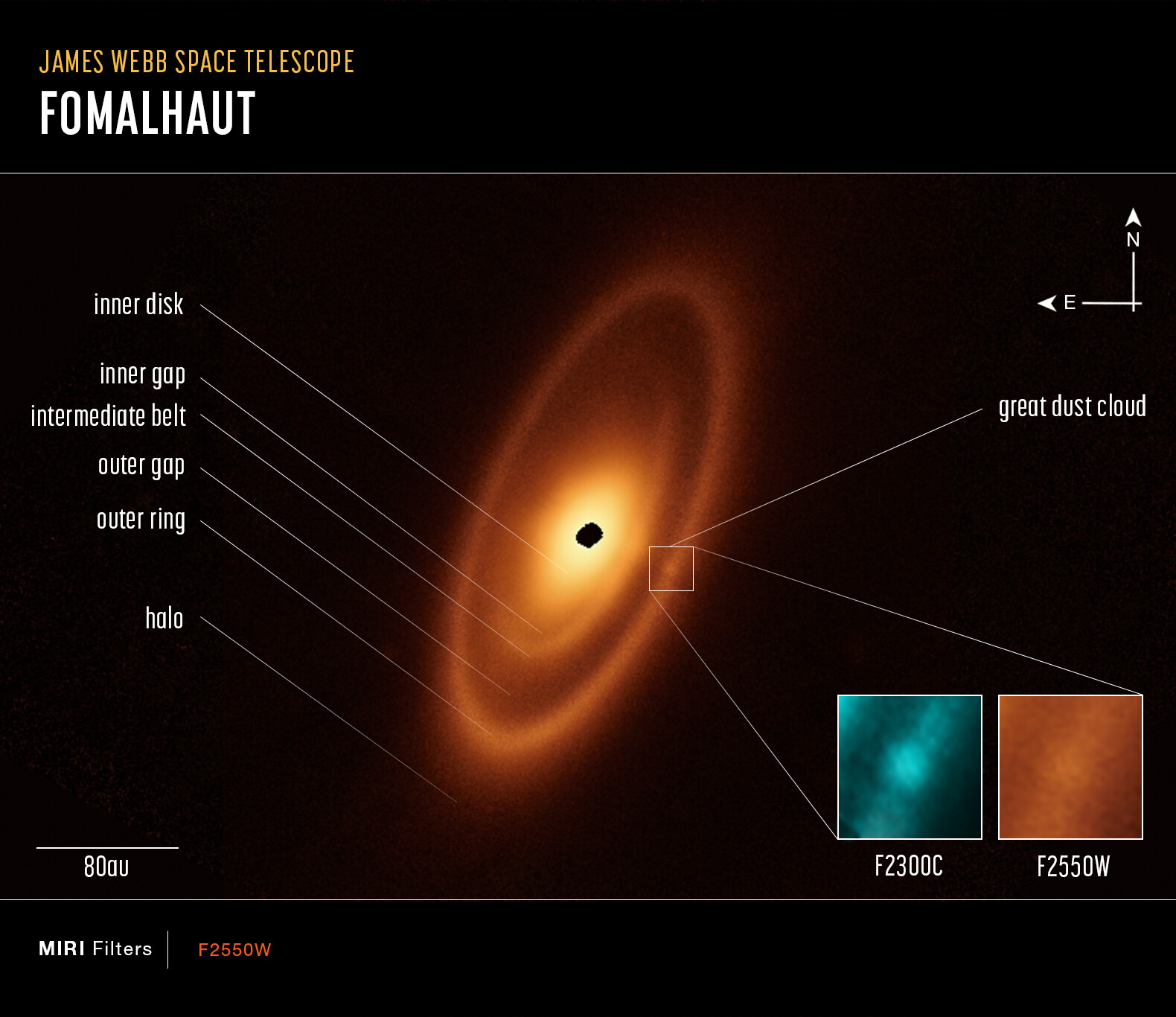NASA | GSFC | STScI | Webb | ESA Space Science | ESA Webb | 2023 May 08
Astronomers used the NASA/ESA/CSA James Webb Space Telescope to image the warm dust around a nearby young star, Fomalhaut, in order to study the first asteroid belt ever seen outside of our Solar System in infrared light. But to their surprise, they found that the dusty structures are much more complex than the asteroid and Kuiper dust belts of our Solar System.
Overall, there are three nested belts extending out to 23 billion kilometres from the star – that’s 150 times the distance of Earth from the Sun. The scale of the outermost belt is roughly twice the scale of our Solar System’s Kuiper Belt of small bodies and cold dust beyond Neptune. The inner belts – which had never been seen before – were revealed by Webb for the first time.
The belts encircle the young hot star, which can be seen with the naked eye as the brightest star in the southern constellation Piscis Austrinus. The dusty belts are the debris from collisions of larger bodies, analogous to asteroids and comets, and are frequently described as ‘debris discs’.
"I would describe Fomalhaut as the archetype of debris discs found elsewhere in our galaxy, because it has components similar to those we have in our own planetary system," said András Gáspár ... "By looking at the patterns in these rings, we can actually start to make a little sketch of what a planetary system ought to look like – if we could actually take a deep enough picture to see the suspected planets." ...
Spatially Resolved Imaging of the Inner Fomalhaut Disk Using JWST/MIRI ~ András Gáspár et al
- Nature Astronomy (online 08 May 2023) DOI: 10.1038/s41550-023-01962-6

